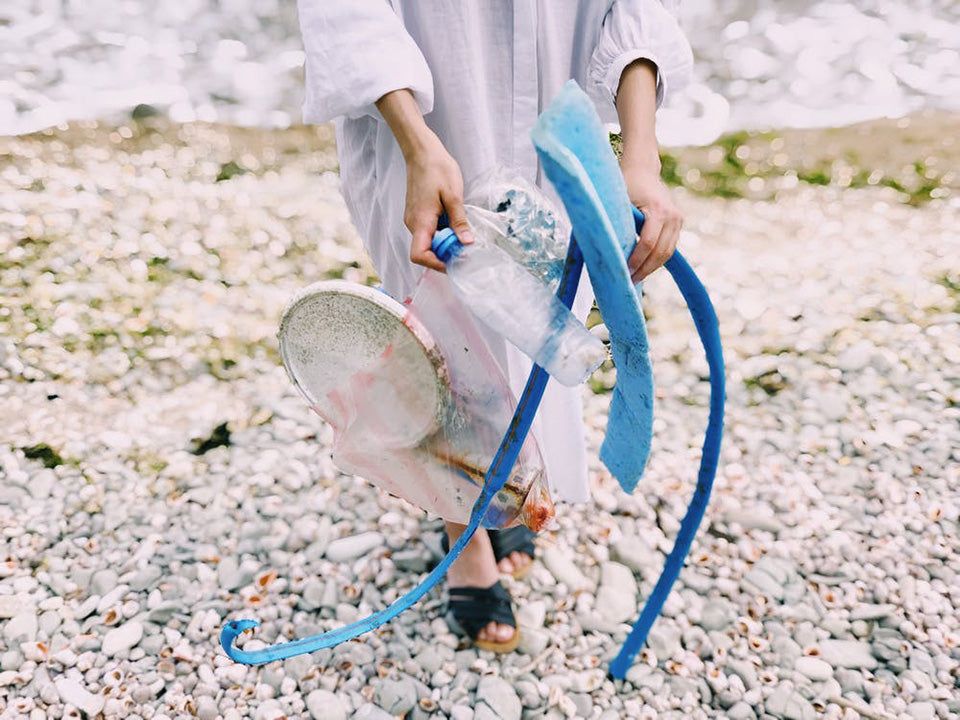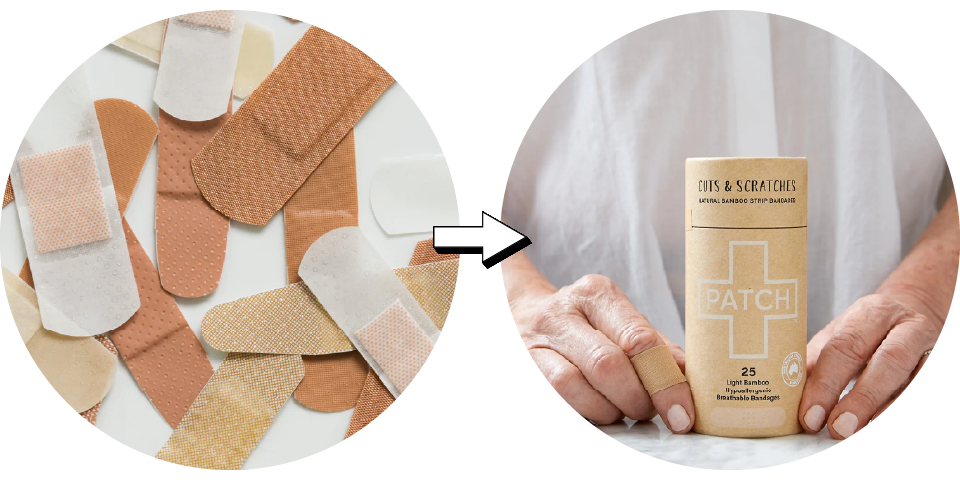What Is Hidden Plastic? 15 Common Items Where Hidden Plastic Is Lurking

The world has a plastic problem, that’s obvious. But hidden plastic is lurking in places you may not realize. Learn where it is and how to replace it.
Estimated Read Time: 7 minutes

Photo by Daria Shevtsova
Plastic is everywhere.
Take 15 seconds to look around you right now. How many plastic items do you see?
It’s in your homes, your food, your personal hygiene products, it’s even in the rain!
In addition to the plastic you see everyday, many other products you use are filled with hidden plastics that we can’t see!
So let’s talk about the hidden plastics you encounter and how to avoid them!
What Is Hidden Plastic

Photo by Alfo Medeiros
You know what plastic looks like, feels like, and probably even smells like. But hidden plastic exists in many everyday products that are too small for us to see it.
These hidden plastics leak into the environment and wreak havoc. Once in the environment, they end up in farming soil, the air, and even rain.
Due to their small size (< 5 millimeters) smaller animals eat them which either damages the animals, or works its way up the food chain to humans.
Should We Be Concerned About Hidden Plastics?

Photo by Nick Russill onUnsplash
Scientists have just begun studying these micro and nanoplastics because of the concern around plastics infiltrating the human body. Plastics have already been found in the bloodstream and more attention is being given to what the effects of our long term exposure will be.
But knowledge is power! Knowing where these hidden plastics lurk can help you cut them out and replace them with plastic-free alternatives!
15 Sources Of Hidden Plastic You Should Know About
1. Menstrual Products

Menstrual products sit inside your body or on your most sensitive bits for hours a day, for years of your life. Wrapped in plastic and made from synthetic materials containing known toxins, ~90% of pads and tampons are made of plastic.
FIX IT:
2. Glitter

Glitter is sadly just tiny pieces of plastic. As such, keep it away from any sensitive areas and don’t wash it down the drain; it cannot be filtered out by water treatment facilities.
FIX IT:
- The best fix is to cut glitter out (both sad and difficult)
- Bioglitter is the only alternative that has been independently verified to degrade in normal, natural conditions.
3. Receipts

If you avoid paper receipts, it turns out that might be the best thing for you. Receipts have a paper base that is coated in a fun little chemical you’ve probably heard of: BPA, a known toxin and endocrine disruptor that easily passes through skin into the body.
FIX IT:
- Leave it or opt for a digital copy if possible
- Wash your hands after touching one — especially if you are pregnant.
- Keep receipts out of reach from babies and toddlers.
4. Bandages

Obviously bandages have plastic waste, but the bandage itself is made from plastic and sometimes latex. When degrading, they leak toxic chemicals which you probably don’t want on an open wound.
FIX IT:
- Patch bandages are made from 100% bamboo and perfect for sensitive skin.
5. Tea Bags

If your tea isn’t wrapped in plastic or contains individually plastic-wrapped tea bags, you’re off to a good start! But hidden plastics can be used to help heat seal the bag, keep the contents in, or keep the shape of the bag. This makes the bags non-compostable or degradable.
FIX IT:
- Steep & Mellow is completely plastic-free
- Consider purchasing loose leaf tea in bulk & using a reusable infuser or a teapot.
6. Table Salt

Up to 90% of Sea Salt brands actually contain microplastics! In the saddest scenario, microplastics exist in salt because of the levels of microplastic pollution in the sea where the salt comes from.
FIX IT:
- Himalayan Sea Salt
- Rock Salt
- Both contain none or the lowest amount of microplastics.
7. Kitchen Sponges

Your sponge cleans, it’s squishy, it does what it needs to do. Buuut sponges are made with plastic and a whole host of other toxic ingredients. After throwing them away when they get gross, they won’t break down in a landfill for centuries.
FIX IT:
8. Disposable Wipes

There’s a reason baby wipes, wet wipes, makeup wipes, and all other disposable wipes aren’t flushable. They contain plastic and will not dissolve in water. Not only are makeup wipes terrible for your skin, most wipes are made from a cotton-plastic blend (AKA polyester).
FIX IT:
- Reusable Cotton Rounds
- Handkerchiefs
- Reusable Cleaning Wipes
- Reusable Mop Covers
- Washcloths
- Rags
- Cut up an old cotton T-shirt
9. Coffee Cups

To-go coffee cups may look like they’re recyclable paper but most are lined with plastic (it’s often not visible) to keep the liquid in. Paper recycling facilities can’t separate these materials out so they end up being trashed.
FIX IT:
- Ceramic Travel Mug
- A Reusable Insulated Mug
- Whatever travel cup you have at home!
- Try it European style and enjoy an espresso in person for 5 minutes.
10. Chewing Gum

We’re not talking about the great comedy by Michaela Coel, more like the stuff humans have been chewing for thousands of years. Today chewing gum is made from the same plastics used to make water bottles, plastic bags, glue, and tires: polyethylene, polyisobutylene, & polyvinyl.
FIX IT:
- Simple Gum
- Chicza Gum
- Also try Licorice!
11. Synthetic Fabrics

Plastics are hiding in our clothes in the form of synthetic fibers including but not limited to polyester, microfiber, & nylon. Everytime you wash them, they shed some microplastics that pass through filtration systems ending up in oceans, rivers, water systems, and polluting the environment.
FIX IT:
- Wash your current clothes in Guppyfriend, a microplastic catcher.
- When shopping or thrifting, look for natural fibers (cotton, hemp, linen, etc), like these 100% cotton women underwear.
12. Produce Stickers (& All Stickers)

While produce stickers are technically low enough in toxicity to be edible, they’re made from plastics and adhesives (and not compostable either). Instead of decomposing they break down into smaller and smaller pieces.
FIX IT:
- Avoid the stickers when possible
- Shop farmer’s markets
- Refuse free stickers when offered
13. Aluminum Cans

You may know that aluminum is infinitely recyclable, but you may not know that almost all aluminum cans are lined with a plastic or lacquer liner. You’ve seen Coke used to clean rust so it makes sense that the contents need to be separated from the tin. When recycled, the plastic is incinerated away and the aluminum melted to be reused.
FIX IT:
- Other than opting for glass packaging when possible, this one’s pretty unavoidable.
14. Takeaway Containers

Even if it's brown and looks like cardboard, chances are it has a plastic liner to keep food from soaking through, Chinese food containers included. If it says “commercially compostable” look for a bin within the store to drop it in, it cannot be composted at home.
FIX IT:
- BYO! When dining out, take a stasher bag, a food tin, or tupperware
- Here’s a guide to recycling takeout containers from CNET
- Please do not reheat plastic takeout containers
15. Beauty Products

From glitter in makeup, to abrasives in toothpaste, to exfoliants in scrubs, and even in shampoos, microplastics are hidden all over the cosmetic industry for a plethora of purposes. While there are restrictions around their use, when the top 10 cosmetic brands were studied, 87% of the products contained microplastics.
FIX IT:
- All products from ZeroWasteStore are plastic free including hair care, bath & hygiene, & beauty products.
Introducing hidden plastics can be a lot to handle. Remember, it’s better to have millions of people trying to practice zero waste imperfectly than to have a few hundred practicing it perfectly.
Change needs to come from all levels; if you want to see change within your favorite brands, consider sending them an email and calling your local representatives.
Other Blogs You Might Find Helpful:
- 18 Ways to Help You Have a Zero Waste Summer
- ZWS Essentials - A New Spin on Everyday Basics From ZeroWasteStore
- 5 Best Selling Zero Waste Products Straight From Our Community
- 26 Sustainable Terms & Definitions To Help You On Your Sustainable Journey
- 17 Best Environmental Documentaries [and books] to check out in 2022
- Easy Recycling Tips To Help you Understand What Kinds of Materials Can Be Recycled


Comments (0)